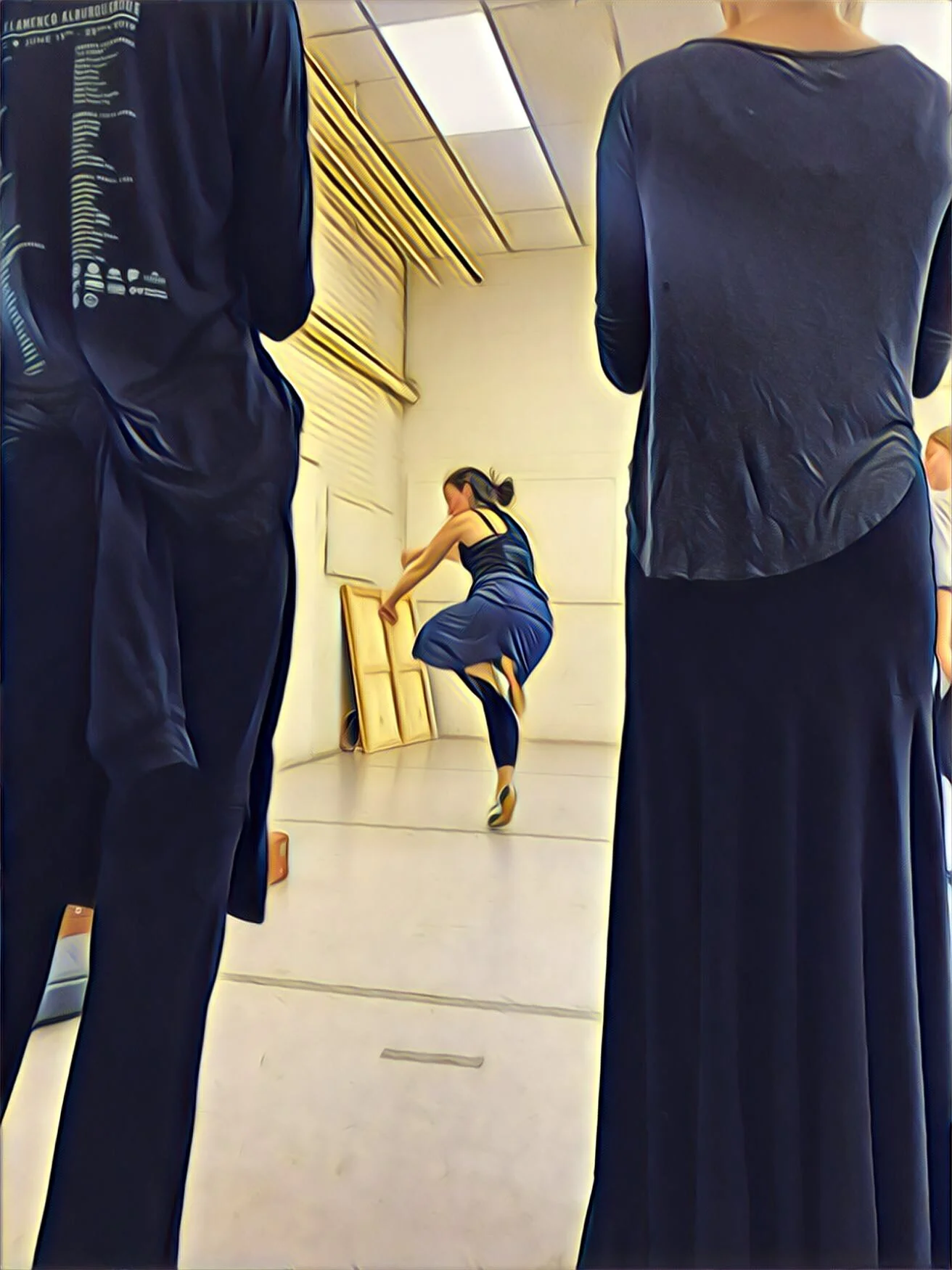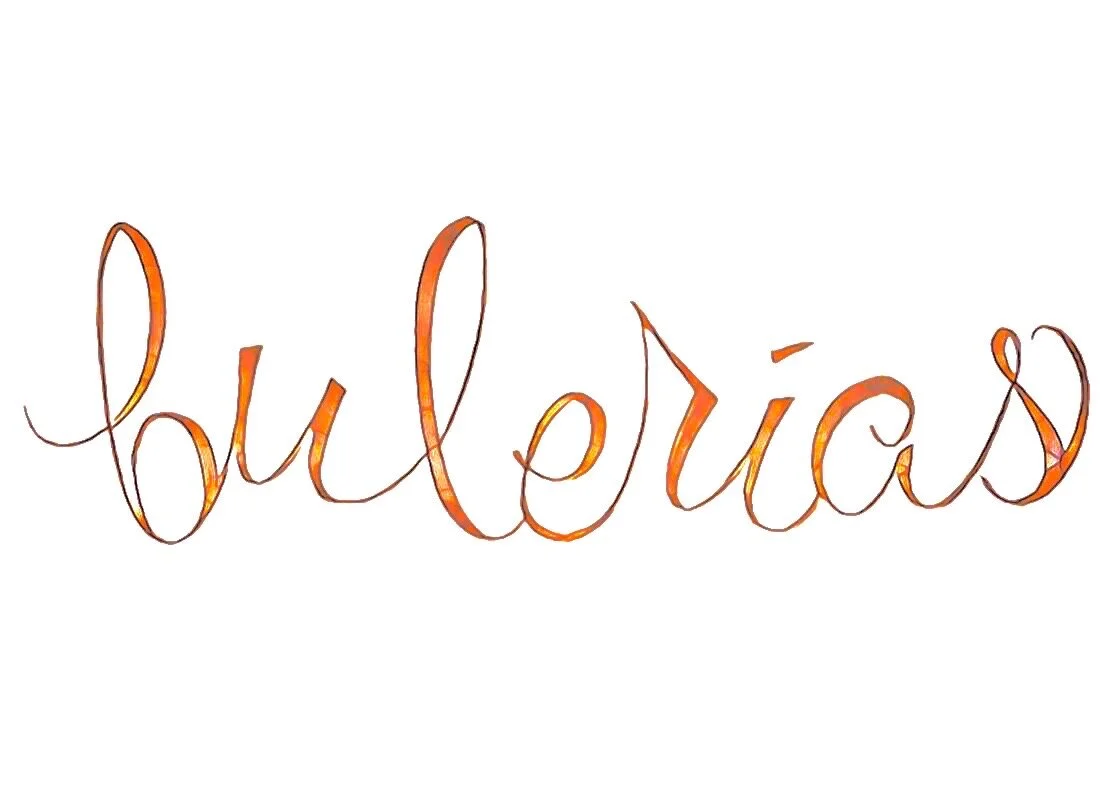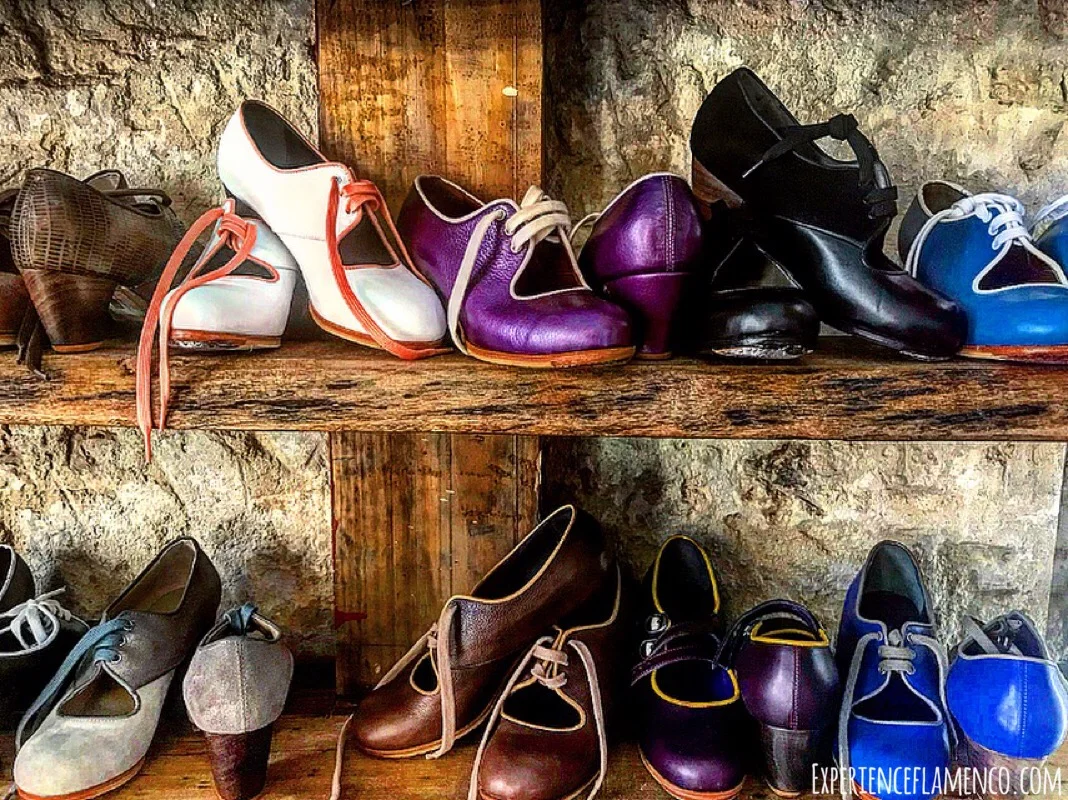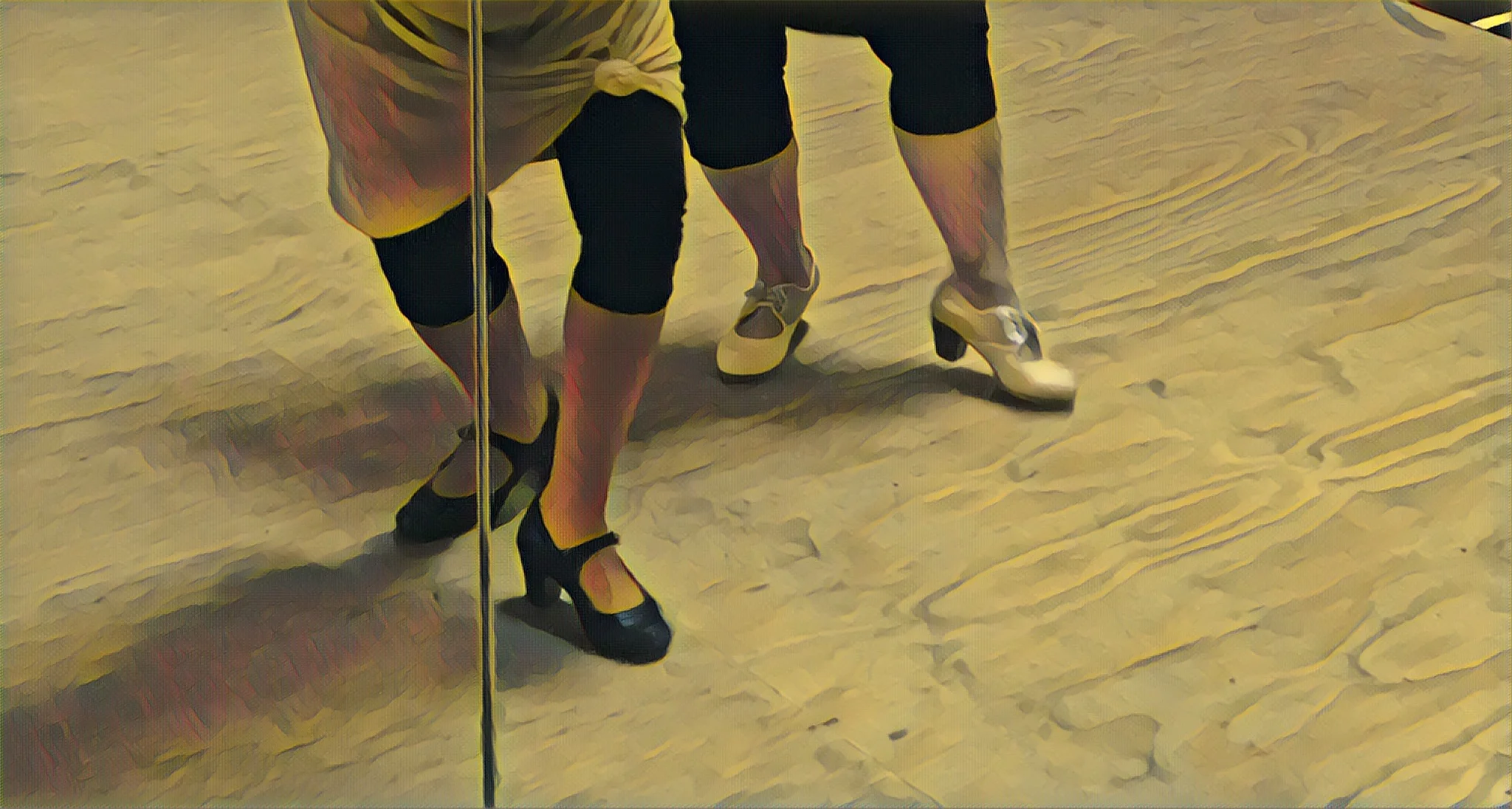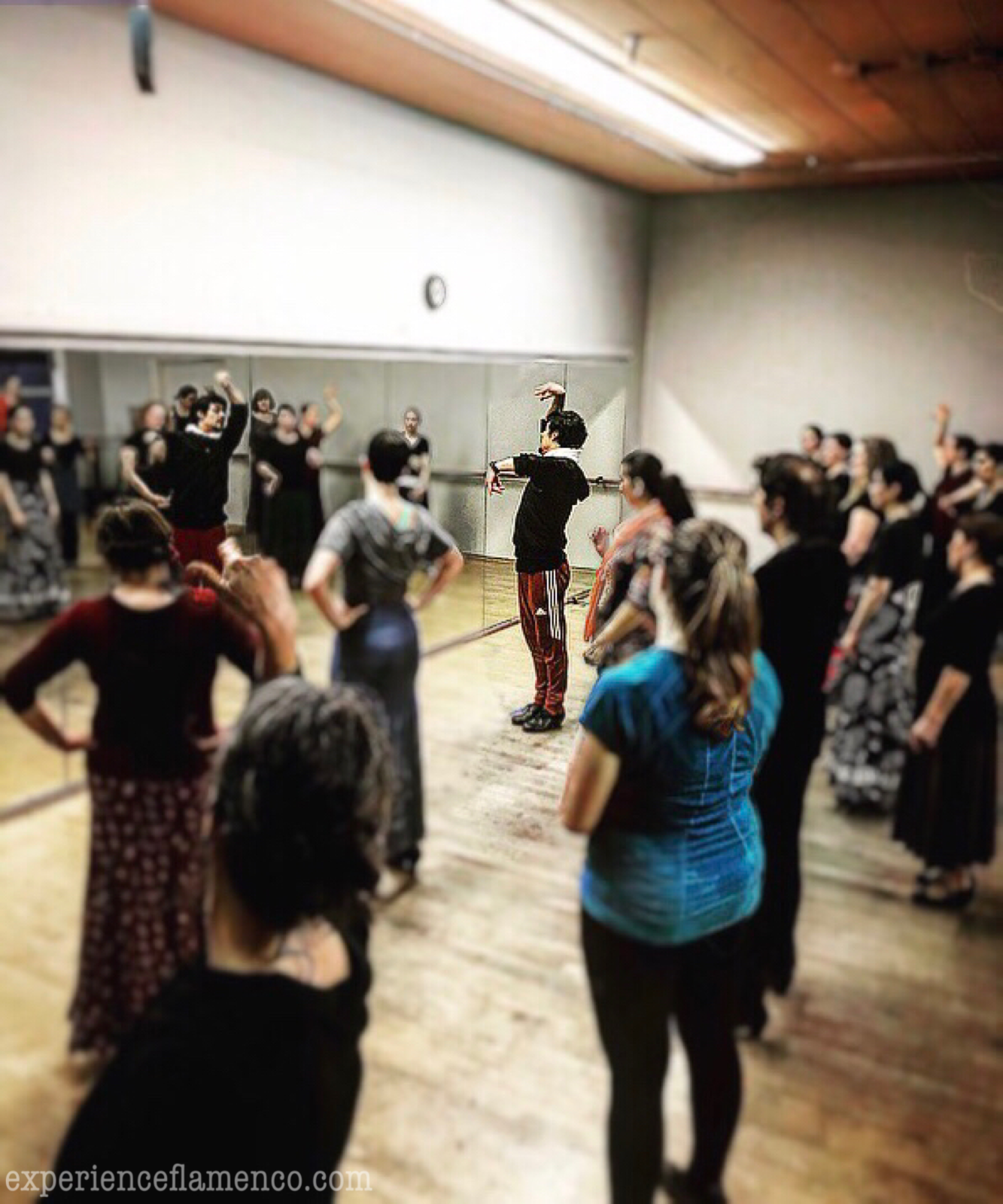Here’s what a typical morning looks like on the Flamenco Tour to Jerez.
Viewing entries in
Hows & Whats
You will be BLOWN AWAY watching Concha Jareño, our teacher for the Flamenco Tour to Madrid, dance in the video below of her bulerías workshop at Amor de Dios in Madrid.
Following the video you can read what she has to say about the difference between flamenco today as compared to sixty years ago and about sensuality and sexuality and how they do or don’t show up in her dancing.
Keep Reading
Test your bulerías knowledge by taking the following quiz.
It's short.
It's fun.
And you might learn something or just bathe in the satisfaction of realizing how much you already know.
Ready?
Keep Reading
Do you know how to dance bulerías to the cante?
This is what you’ll see Carmen Herrera doing in the video below as José Mijita sings and Carlos Grilo accompanies on guitar.
Keep Reading
Would you like to learn the castanets sounds to accompany sevillanas? If so, read on.
Today I share the toques (sound patterns) written out for all four sevillanas coplas along with a couple of instructional videos and another for your enjoyment.
Keep Reading
The following flamenco dance tips were born out of a longing to be back in class with Mercedes Ruíz. Because I love it there. I love how we learn, the focus on technique, the repetition, watching Mercedes move.
So here are eleven tips I’ve learned studying with her over the years. Each tip includes a brief exercise to help you apply it.
Keep Reading
You asked me to analyze more videos around here to better understand how flamenco dance works, so today I will deconstruct another bulerías of Pastora Galván. So here is a video (that you’re going to LOVE) followed by a breakdown of each component of the dance and when it happens:
Keep Reading
Here is an observation activity to help you understand bulerías more deeply along with a letra and a video from the Peña la Bulería caseta during the Feria de Jerez.
Keep Reading
Sound made with the feet in flamenco is most commonly called zapateado, coming from the word zapato (shoe.) It can also be called taconeo coming from the word tacón (heel). Here are the basic flamenco footwork techniques that are used to create sound patterns with the feet.
Keep Reading
Ever find yourself getting stuck in your head during class?
I know how you feel.
Today I will share with you four things you can do when you find yourself in this situation and I’ll show you a video you’ll LOVE of Beatríz Morales.
But first, a story.
Keep Reading
Did you set a flamenco (or any type of) resolution last January?
How’s that going?
If the goals you set feel like distant memories, read on. Today I will tell you how you can get back on track and explain why you don’t want to beat yourself up for having let things slide.
Keep Reading
I love asking flamenco artists I admire what advice they have to offer to the flamenco student. Here are thirteen suggestions from some of the best:
Keep Reading
Do you wonder where to go to learn about flamenco history? Flamenco singing? Flamenco styles? The terminology?
Below you’ll find a variety of resources to assist you on your quest for more flamenco knowledge.
Keep Reading
Bulerías is a fiesta-style dance typical of Jerez, Spain. It is the most improvisational form of flamenco and probably the silliest as well. The following video from a produce shop in Jerez gives you a picture of what bulerías is all about …
Keep Reading
Why dance flamenco?
Flamenco offers all kinds of benefits: physical, emotional, intellectual, cognitive ... It is perfect for those who never considered themselves to be dancers and for those who have done other forms of dance. And the best part? You can start learning when you're seven or when you're seventy, (no joke)!
Here are twenty five reasons to do it,
Keep Reading
What should you do if if you have just 15-20 minutes a day to practice?
That’s what a student asked me to find out when I interviewed Jesús Carmona last month.
Here are the five recommendations he shared along with videos to help you get started on your own at home. (Some of what he advises might surprise you.)
1. Abdominal Exercises
The first thing Jesús mentioned was the need to strengthen our abs. Don't know where to start? Try this:
Keep Reading
When Jesús Carmona was here he recommended that every student of flamenco improvise a little bit each day. In honor of that, here's a guided exercise in improvisation along with a video and examples of how a letra can vary.
First, the letra:
In the video example the singer interprets the same bulerías letra in two different ways, which makes it great to practice to.
Version One (5 minutes in)
Dime niña hermosa
quién te peina el pelo
RESPIRO (one compás break, 12 beats)
lo peina un estudiante
te lo riza un artillerooooo... de la artillería
que con gracia y salero
con gracia y salero
Keep Reading
Read on for my seven biggest takeaways from this month's workshops with flamenco maestro Jesús Carmona followed by a challenge for you.
Jesús is all about working hard, breaking things down, and holding high expectations all while having fun. A true master teacher. He sees everybody and expects maximum effort from all. He worked us HARD during the workshops in Portland. It was truly satisfying to see and feel the progress that we made in just four days. How can something be semi-torturous yet completely wonderful at the same time?
Here are seven pieces of advice from Jesús that will help you become a better flamenco dancer.
Keep Reading
Does the thought of taking a flamenco workshop with a master artist from Spain fill you with excitement or fear?
If you're anything like me you feel a little bit of both.
Here are some steps you can take before, during, and after a workshop to help manage any overwhelm that comes up:
Before the workshop
1. Decide what you want to get out of it
Set a workshop goal.
Do you want to master the choreography? Improve upon a specific technique? Get inspired? Become a better learner? Implement the teacher's personal styling? Simply have a fun experience?
Keep Reading
Flamenco lover, this post is dedicated to you.
Last week I asked some students what they loved about flamenco. (I asked myself too.) Our answers became the list below. Following the list you'll find the video that inspired one reader to begin dancing flamenco along with a downloadable valentine for you.
What We Love About Flamenco:
- The challenge
- The community
- The emotion
- The elegance
- The passion
- The boldness
- The rhythm
- The beauty
- The focus
- The complexity

![Part 1: La Mañana [A Day in the Life of a Student on the Flamenco Tour to Jerez]](https://images.squarespace-cdn.com/content/v1/568079e7bfe873f15c115eee/1577786630943-ZOE3QA566ZL04WZ6BGXW/IMG_2933-small.jpg)
